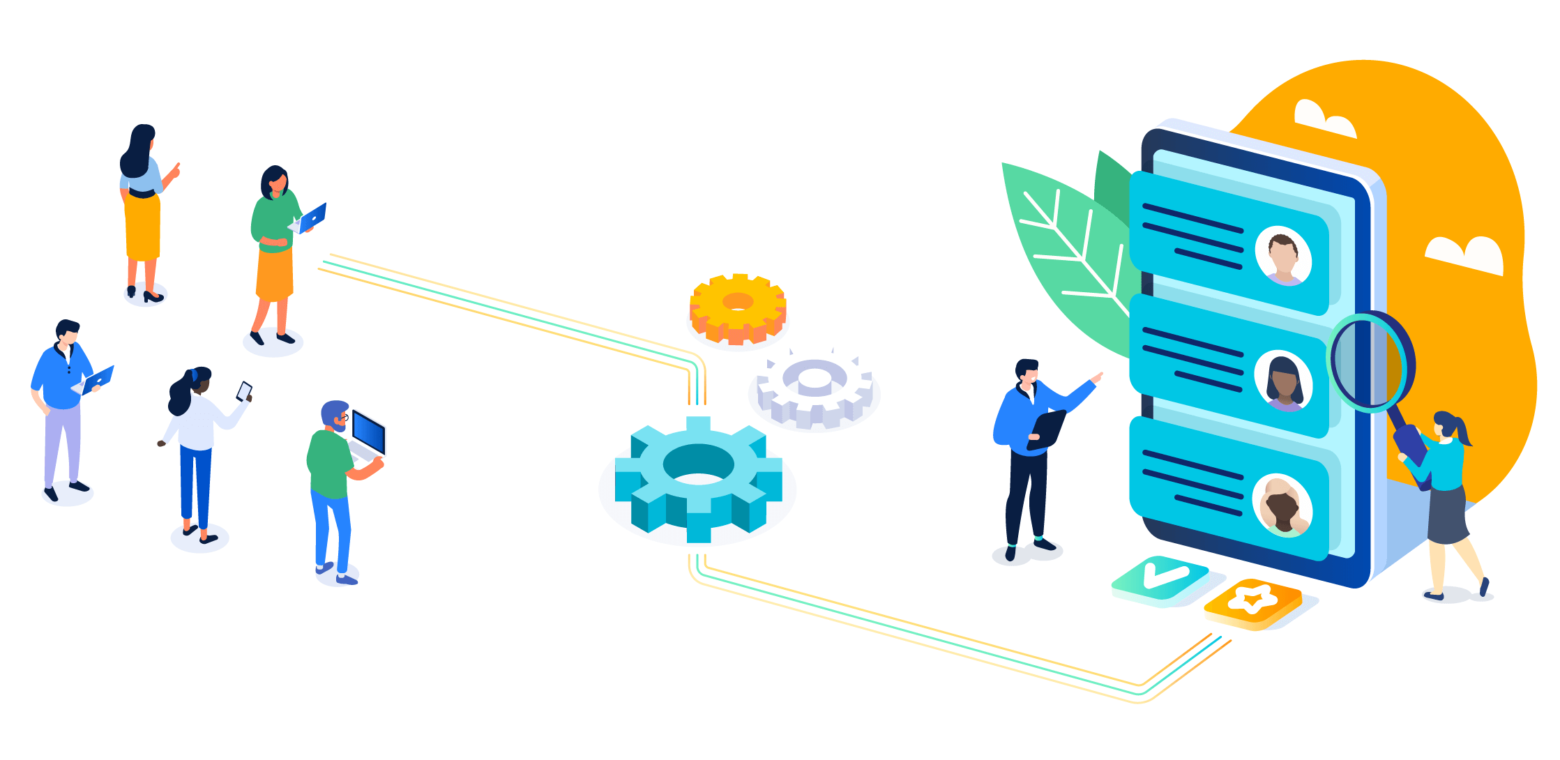Look under the hood of any modern company’s team and you’ll find the steady hum of technology, teamwork, and operations in the pursuit of growth. Atlassian is no different.
The company recently set a goal of reaching 25,000 employees by 2025. That’s triple the number of current employees at the company and has big implications for the people systems that underpin it.
“It’s an incredible goal that needs an incredible platform across the company, including on the People technology side,” says Caroline McBride, a senior business systems analyst on Atlassian’s People Tech team.
Atlassian’s HR department is called the People team. They’re supported by the People Tech team – an Atlassian IT group dedicated to developing IT solutions to support the needs of HR. It’s a model that’s essential to how Atlassian HR operates and grows with the overall company.
Without a platform to support a scaling organization, there’s a lot of unnecessary effort spent tracking and updating systems that could easily be tracked through automation instead of continuing to do it manually. It’s how Caroline and Atlassian’s People Tech team solved a problem plaguing HR for years.
Getting a handle on Workday updates
Atlassian uses Workday as its human resources information system (HRIS) platform, managing sensitive and personal information, payroll information, and much more. Workday’s ecosystem is rich and nuanced, with software updates from the company rolled out twice a year. Each time there’s a Workday update, there’s a ripple effect across the system that can shift where data and information sit. So, Atlassian’s IT team needs to keep track of what’s changed on behalf of HR.
The trouble is that any given update could have hundreds, if not thousands, of changes. It also could have relatively minor impacts or have the potential to break the entire system if the IT and HR teams didn’t properly plan for updates.
At a glance, these updates don’t seem to have an effect on a company’s bottom line or its day-to-day operations. Aren’t updates as simple as downloading something and waiting a few seconds?
Nope, says Caroline. It’s much more complex than that. Take the example of giving employees the option to update and share their pronouns. Usually, this type of data has the same security as someone’s name, address, social security number, and any other sensitive information. But enabling pronouns to be visible to everyone entails creating a separate security system, toggling it on, and testing it to ensure that Workday doesn’t share any more than the pronouns.
“Updates like that are complex, to say the least,” Caroline says. “So having more history, rigor, and structure through Jira to manage these updates through Workday is a game changer.”
To protect personal information like that and prevent the system from breaking, the team tracked updates manually, using spreadsheets and tagging team members assigned to investigate, track, test, and approve the updates. Even though it worked, it required over a month’s worth of work for each bi-annual update and was starting to show its limitations. For example, as the number of Atlassian employees grew, the ability to efficiently manage all of the updates from Workday shrank. There just weren’t enough people to track the seemingly endless number of changes.
Plus, it was hard to see the status of specific updates – whether it was ready to be implemented or falling behind schedule – from a single line in a spreadsheet. There had to be a better, automated way. So, they turned to Jira.
Using Jira to organize data
Atlassian IT embraces the philosophy of using best-in-class solutions to solve problems. Jira was the obvious path forward with its ability to create a standing record of changes and run extensive reports.
The end process involved creating a workflow through Jira to track each and every update. Every issue now became a Jira ticket, with a summary at the top and a complete and searchable history of updates. Through Jira, the team gets a holistic view of every update. Even more powerful was the ability to assign tasks and automate reminders to ensure that tests were completed.
“Using Jira, it’s incredible to see stats and insights that we never had before. We can focus on specific areas, see who needs to work on what, and prioritize accordingly,” Caroline says.
Annually, the new process has cut out a month’s worth of work that the team spent processing and testing updates. But more importantly, the team doesn’t need to drop everything in the weeks leading up to the Workday updates.
Creating a foundation for HR growth and scale
Setting a foundation through Jira for HR operations is the key to success for companies looking to grow and scale. It’s why Atlassian IT is investing heavily into the pillars of technology – including how they use their own products – for the People team.
“Having a tool like this lets us create updates consistently across all our tools. It’s the answer to the question we’ve asked ourselves for years: ‘How do we manage all these updates and changes from Workday?’ The answer is using Jira to connect our work with the data,” says Caroline.
For more stories about Atlassian IT solving People team and HR problems, check out the Connected CIO page.



